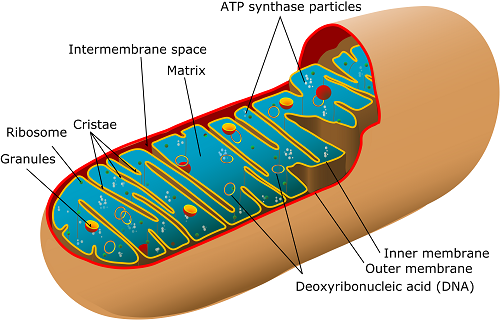How cells produce energy

A lot has happened since I last posted an update on my game. I figured out how to create draggable objects in d3.js, and I’m learning about collision detection to create the nucleus-ribosome transfer. But programming isn’t the only thing I’ve done for this project. I’ve also been reading a textbook called “Essential Cell Biology”, and I got the idea to share some of the information on my blog.
Cells are more complex than any man-made machine, yet they are smaller than anyone could imagine. They support all life, yet each one is tiny compared to the size of the organism it supports. The cell is such a remarkable thing, able to do things way beyond its petite size. But, how do cells power all of their functions?
As you already know, the human body gets its energy through eating. But what happens to all those molecules inside the food? Well, they go into the cell’s mitochondria. Before we go on, I actually want to mention that mitochondria were once independent single-celled organisms! These early prokaryotes which mitochondria descend from were the first organisms to find an efficient way to produce energy. At some point, these organisms were swallowed up by eukaryotic cells through a process called endosymbiosis, and they evolved cooperatively over time, with the prokaryote becoming a new organelle and the eukaryote evolving to use the energy the mitochondria provides.
Now, what happens in the mitochondria? Well, a ton of complex molecules like carbohydrates and sugars all go into the mitochondria which constantly rips them apart and mashes them together until they generate enough of a special molecule called Adenine Triphosphate, or ATP for short. ATP has a special structure which allows it to power organelles such as the ribosomes, which generate proteins which perform functions all around the cell and the rest of the body.
Great post!That is an interesting topic.
The plants we eat(which produces ATP from photosynthesis)gets broken down by stomach acid and enzymes which goes into the mitochondria where it gets turned into even more ATP that the cell then uses for energy.It is amazing that it all works out so well!